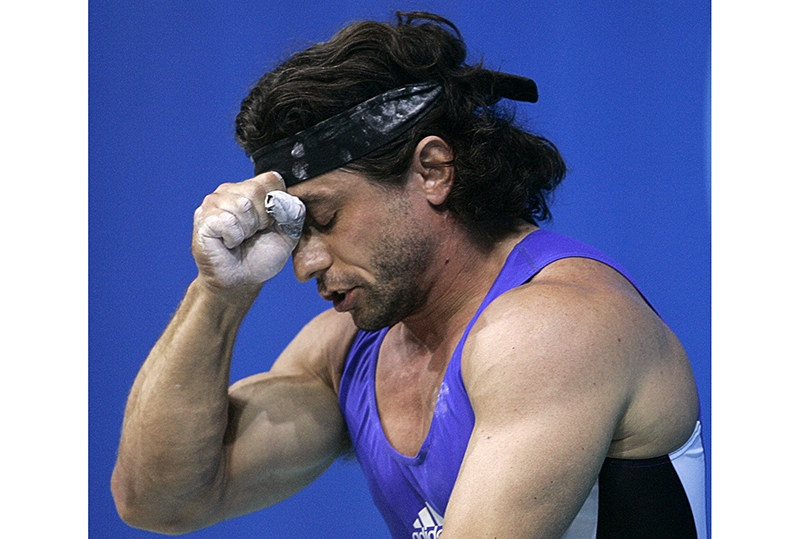In a more recent study(1) 69 recreational swimmers, all physical education students, were asked to perform two 500m freestyle swims on either side of an intervention designed to compare the effects of associative and dissociative techniques on performance.
First all the participants completed a questionnaire designed to identify, among other things, their general thought patterns while swimming. They were then asked to complete the first 500m swim as fast as possible, taking care to pace themselves and not to race. All starts were staggered by one minute to remove the competitive element from the swim and enable the swimmers to use dissociative strategies if necessary.
Immediately afterwards they completed three further questionnaires, designed to assess their perceived exertion, perceived fatigue and their preferred attentional style while swimming (ie associative or dissociative). The researchers then divided the participants into four groups, with a roughly equal representation of different swimming speeds in each group. Each group was assigned to a different attentional strategy - association, internal dissociation, external dissociation and no strategy (control) before performing the second swim a week later.
The best way to understand the differences between the groups is to read their different instruction sheets, which were follows:
External dissociation:
'While you are swimming, I want you to focus on the ends of the pool. Every time you approach one end, you will notice one, two or three large geometric shapes (square, circle or triangle). Your task is to add to the numbers of squares or circles and triangles seen throughout the swim. Try not to lose count. Your score will be requested at the end of the swim. Some studies have shown that this simple technique can actually make a positive difference when performing endurance activities. It is important that you focus your attention particularly on this task while still trying to maintain your optimum pace for the entire swim!'
Internal dissociation:
'While you are swimming, I want you to imagine yourself doing something that is pleasant but unrelated to strenuous exercise. Different people like to concentrate on different scenes, so just think about whatever might be fun and enjoyable to you. It might be lying on a beach, solving mathematical problems, building a house or thinking about someone you care about. Some studies have shown that this simple technique can actually make a positive difference when performing endurance activities. It's important that you focus your attention on these thoughts and images but still try to maintain your optimum pace for the entire swim. Concentrate your attention on a pleasant but unrelated scene, ignoring as much as possible your feelings of exertion!'
Association:
'While you are swimming, I want you to think of the word air every time you inhale. Try to think of nothing but the word air. Some studies have shown that this simple technique can make a positive difference when performing endurance activities. It's important that you focus your attention only on this word but still try to maintain your optimum pace for the entire swim. Remember, think only about the word air, and on every breath you take try to ignore, as much as possible, your feelings of exertion, without compromising your pace.'
By comparison those in the internal dissociation group showed an improvement of just 1.13 seconds, while those in the external dissociation group slowed down by an average 0.21 seconds. The message is clear: association is by far the best strategy for swimmers to employ, while external distraction could be construed as damaging, albeit slightly, to performance. Therefore 'keeping your mind on the task' would appear to be a prudent strategy for swimming peak performance.
Swimmers need to concentrate on their breathing
In fact the pre-swim questionnaire revealed that more than three quarters of the participants had a preference for associative strategies, which seems logical. The enclosed, comparatively low-stimulation environment of the swimming pool offers little opportunity for the mind to wander to anything but swimming, Moreover, the simple act of breathing requires considerably more conscious effort than that required for, say, running. Swimmers have to be able to rotate their heads at a specific moment and breathing must be timed accordingly. As someone who has often swum freestyle recreationally for five miles within a single week, I can tell you that this is not a natural manoeuvre!
When you are swimming fast, oxygen is at a premium. And competitive swimmers may devote a large portion of their time to associative thoughts (eg 'reach' or 'pull') which maximise their ability to take in air in the short window of time available. I say associative 'thoughts' rather than 'strategy' because the latter term implies deliberate use of these thoughts. It seems likely that swimmers naturally use thoughts that enable them to cope with the swimming pool environment.
Thus performance differences observed in the three experimental groups described above may have been due to something more specific than simply focusing on the task in hand. Oxygen consumption during swimming is fairly high up the scale when compared with many other aerobic-type activities. Recreational swimmers prefer to concentrate on other aspects of performance such as their pull, arm height and hydrodynamics; yet when attentional resources were switched to the breathing phase of their cycle, performance improved markedly. This suggests it might be advantageous for swimmers to devote training time to focusing attention on air intake.
It is also worth noting that maximising air intake would improve the buoyancy of swimmers - particularly men, who have less body fat than women and must therefore expend more energy to travel at the same speed. Any slight increase in inspiration would have a double-barrelled effect on performance - increasing available oxygen and boosting buoyancy. So associative strategies appear best for both rowers(2) and swimmers in endurance events. However, a problem fundamental to research into cognitive strategies is accurate self-reporting. You can appreciate the truth of this if you attempt the following experiment: at any random point in time, try to write down everything you've been thinking about for the previous five minutes, noting down the length of time devoted to each topic and the order in which you thought about them. Not easy, is it? The fact is that we continuously move from one train of thought to the next, with seamless transition. From personal experience I know that attempting a dissociative strategy two thirds of the way up a long steep hill or in the latter stages of a tough swimming session is well-nigh impossible. By contrast, it is so easy to dissociate two thirds of the way down the same hill or at the start of a leisurely swim that you may unknowingly decelerate.
Analyse your thoughts during training
So how can you make practical use of these findings? Why not start by making notes about your thoughts during or after training - the former being preferable? How often are your thoughts task-relevant/associative and how often are they task-irrelevant/dissociative? This kind of self-reporting is far from ideal, but until someone invents a mind-reading machine it's all we have to work with.
At the same time you should keep a record of your performances - times, distances, reps etc. After accumulating a wealth of notes combined with performance statistics, patterns may begin to emerge which could guide your training. For example, you may notice that paying greater attention to your running stride hastens fatigue, while aligning your breathing rate with your stride rate ( PP Issue 105) distracts you from the fatigue in your legs in such a way that you are able to put in a stunning new PB.
If you are a swimmer, a shift of focus onto the incoming air may prove more beneficial than other performance-related stimuli. Once you've realised that some attentional foci are more functional than others, you may be able to guide your thoughts to facilitate better performance.









